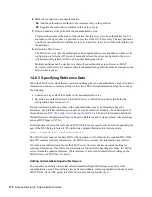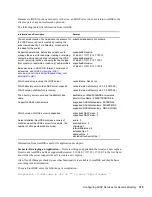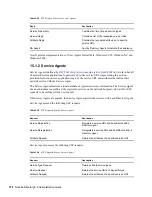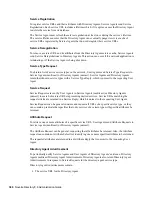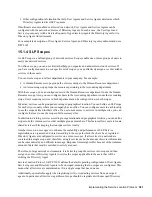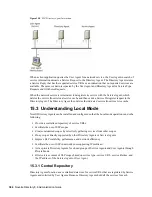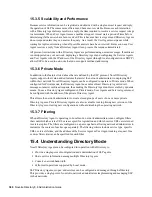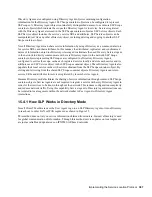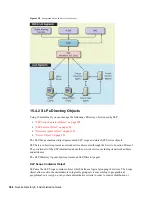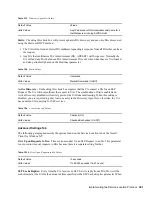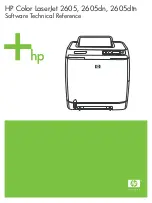
382
Novell eDirectory 8.8 Administration Guide
no
vd
ocx
(e
n)
6 Ap
ril 20
07
Agents. But if an unscoped request is made to an unscoped agent, only those services registered as
unscoped can be returned. On the other hand, a scoped request will return all services from the
requested scope as well as all unscoped services matching the request criteria.
When both scoped and unscoped agents are used in the same network, results are often confusing
and sometimes inconsistent. Therefore, Service Location Protocol 2 (RFC 2608) removed unscoped
operations from the Service Location Protocol and redefined the default operating configuration to
use a default scope named Default.
To eliminate the confusion associated with mixing unscoped and scope agents in a single network
and to facilitate eventual migration to SLP 2, we recommend that users always configure SLP to use
scopes.
For the following reasons, generally use scopes to organize SLP service:
Services are registered into and retrieved from a scope
Many SLP configuration parameters are set according to scopes
Directory Agents are configured to service one or more scopes
User Agents and Service Agents determine which Directory Agent to query based on the
scopes the Directory Agent is supporting.
Fundamental to the successful organization, deployment, and administration of SLP in a network,
scopes are a valuable tool in controlling the availability of services in the network.
15.2 How SLP Works
User Agents and Service Agents interact on behalf of client applications and network services to
dynamically locate network services. The following interactions are discussed in this section:
Section 15.2.1, “SLP with a User Agent, Service Agent, and No Directory Agent,” on page 382
Section 15.2.2, “SLP with a User Agent, Service Agent, and Directory Agent,” on page 383
15.2.1 SLP with a User Agent, Service Agent, and No Directory
Agent
Figure 15-1 on page 383
illustrates how Service Agents and User Agents interact without a
Directory Agent in the network. When a network application is started, it registers its service URL
and attributes with the Service Agent. The Service Agent stores a copy of the service information in
its local service cache. The Service Agent remains silent, meaning that the service is not multicast or
broadcast on the network.
Summary of Contents for EDIRECTORY 8.8 SP2
Page 4: ...novdocx en 6 April 2007...
Page 116: ...116 Novell eDirectory 8 8 Administration Guide novdocx en 6 April 2007...
Page 128: ...128 Novell eDirectory 8 8 Administration Guide novdocx en 6 April 2007...
Page 255: ...256 Novell eDirectory 8 8 Administration Guide novdocx en 6 April 2007...
Page 406: ...408 Novell eDirectory 8 8 Administration Guide novdocx en 6 April 2007...
Page 563: ...566 Novell eDirectory 8 8 Administration Guide novdocx en 6 April 2007...
Page 573: ...576 Novell eDirectory 8 8 Administration Guide novdocx en 6 April 2007...
Page 601: ...604 Novell eDirectory 8 8 Administration Guide novdocx en 6 April 2007...



